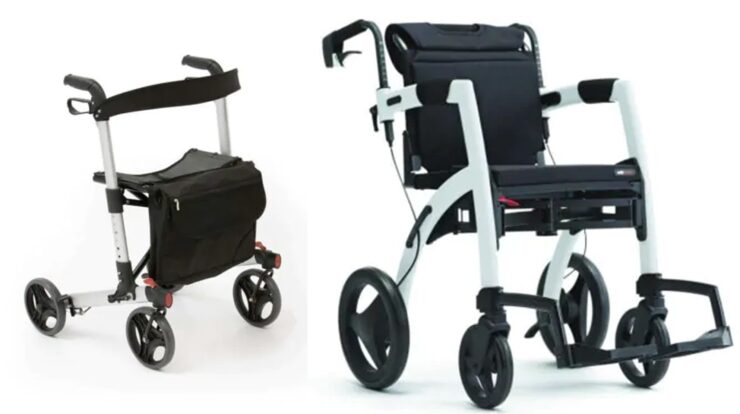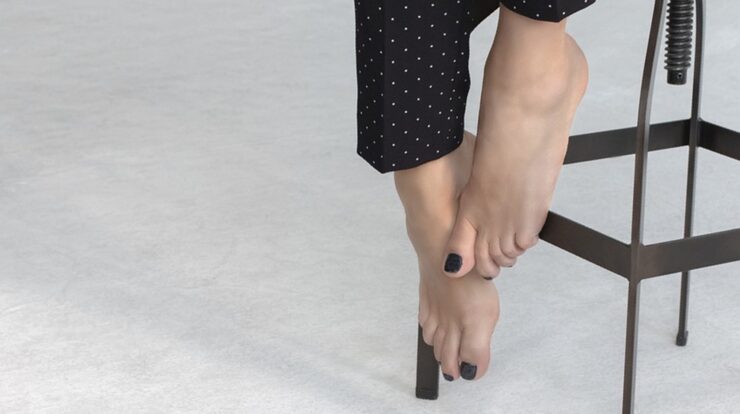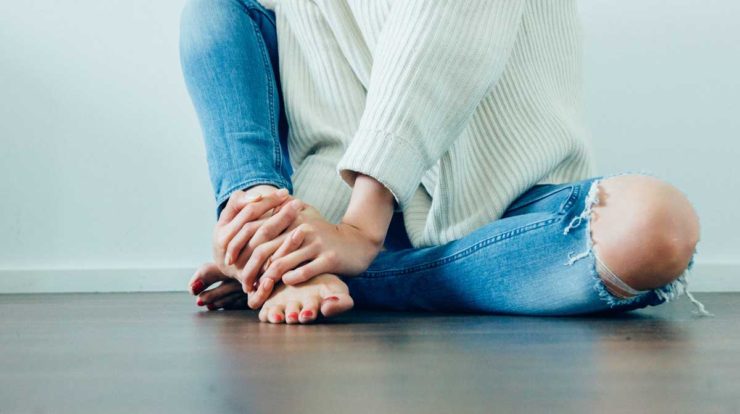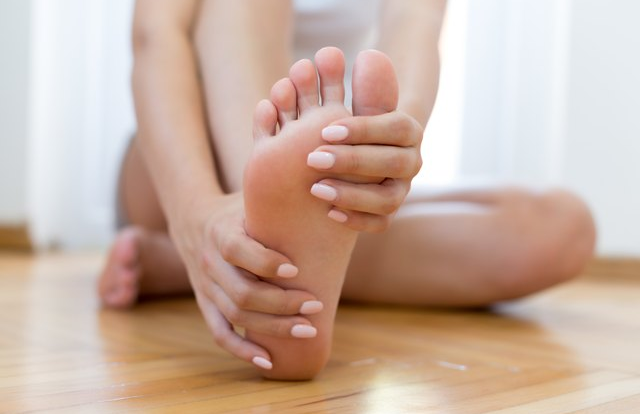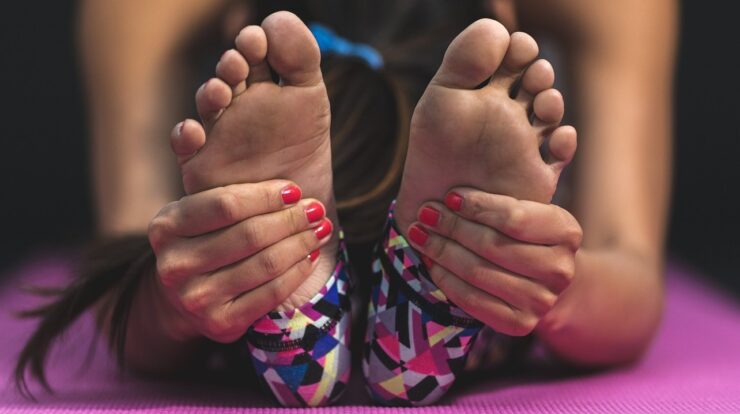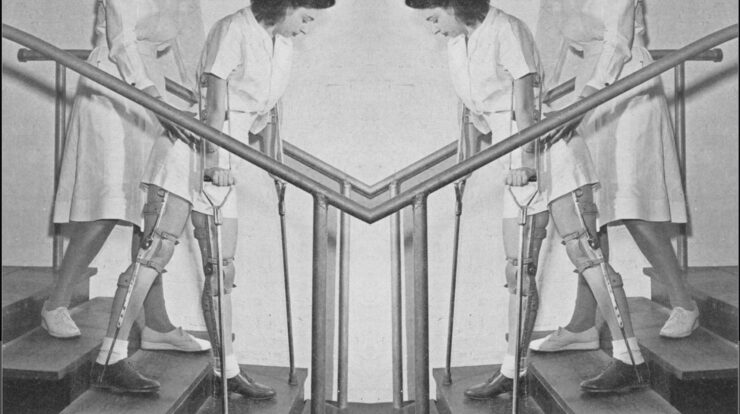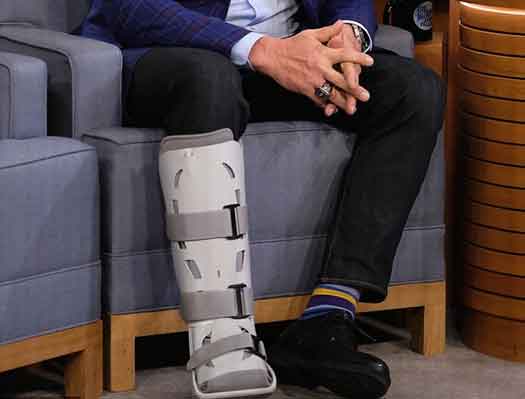
Life happens. At times we may go through severe problems like suffering a broken ankle, leg or foot and may need some useful tips for wearing a walking boot.
In most cases, we can benefit from wearing a walking boot. Having to wear a cast for a broken foot can be a real pain in the “you know what”.
Only by experiencing this pain you will be able to understand, words just cannot express the feeling or the emotion.
Immobilization is the best method to heal broken or sprained feet and ankles faster. The walker boot is strapped to the affected leg to immobilize the injured area for proper healing of bones or tendons.
It is important to properly wear the walking boot to ensure that the leg or foot heals correctly, improper fitting or wearing will make the injury takes longer to heal. It may even lead to severer foot problems like arthritis.
#1 Tips for wearing a walking boot is to use a crutch when requested
Wearing the walking boot has its benefits but it is awkward and clunky to wear. Depending on the severity of the injury you may have to wear the walker boot with a crutch.
If you’re non weight bearing then an iWalki or a knee scooter could be your best option to get around freely. We all love our freedom. I surely do not want to be trapped in a room somewhere away from all the action.
We all love our freedom. I surely do not want to be trapped in a room somewhere away from all the action. I want to always continue to experience the world – even with a broken or sprained foot.
In this article, I share with you some tips for getting around with a broken foot. The most important note is to always follow your doctor, chiropractor or podiatrist.
Here are the tips for wearing a walking boot.
#2 Tips for wearing a walking boot is to keep the swelling down.
Having a broken or sprained leg sometimes involves swelling of the injured area.
The first tip is to keep the swelling down. The best method for doing this is the RICE method.
Let’s get it on… with the RICE method, RICE, RICE Baby. The summarized version of this method…
REST, simply stay off your feet as much as possible. This is the perfect time to renew your Netflix or Amazon Prime subscription and watch the new series of your choice or catch up on an old one – Games of Thrones was lovely.
ICE, to get rid of the swelling put an ice pack on the area, maybe every twenty minutes. Do not put the ice pack directly on your leg, use the ice pack with a fabric cover.
Remember that when the ice pack melts, return it to the freezer for refreezing.
Alternatively, you can get a couple of ice packs just in case you are like me and keep forgetting to refreeze.
Compression, following icing, compression is the next step. After the ice-ing, you need a bit of compression. Use the boot walker.
Your podiatrist will recommend the best one for you depending on the specificity of your injury.
The better boots are the ones with the pneumatic pump. The pump ensures that the boot more comfortable fits your foot.
A snugly fit on your foot means comfort and a faster healing time. A compression socks can help reduce the swelling but be mindful of shifting your newly, healing bone.
Hold off on compression socks until you can press on the injured area without feeling much pain.
Elevate, this is it, the final step of the RICE method. Keep your feet up. The doctors always say that you should elevate our foot above your heart.
You can use an elevation foam pillow for this. The elevation foam pillow is an awesome product and it helps to keep your foot in the perfect position.
Relaxing with your feet elevated is the best position to be in, imagine doing this with a remote in hand and a family member getting all your snacks for your heart’s desire.
The was such an awesome position to be in, resting with a TV remote in hand and a family member always on standby – getting all the snacks. Mmm, lovely. Over doing this will get on their bad side real quick.
Seriously, you are going to need the help of a friend or family member to get you through this difficult period.
Your gym membership, have to be placed on hold. You won’t be going there for a while.
Yor gym trainer is always complaining about members signing up for the gym but not turning up for their sessions. Yeah, he or she will understand.
Your gym membership has to be placed on hold – you have the perfect excuse. Well, at least for the time being, you won’t be going there until you can move on the injured foot.
#3 Tips for wearing a walking boot is to keep pain and discomfort away
With a broken or sprained ankle pain medication may become your new best friend. I use Arnicare cream.
It helps to reduce pain, swelling and bruising. With this cream, swell goes down really quick and muscle pain was at a minimum.
#4 Tips for wearing a walker boot is to let your feet breathe
Do toes need to air out? Simply lift up the toe end of the cover and tuck it under the first layer of the overlapping foam pieces on your boots.
The cover will still look good because the Velcro straps keep it in place on the sides.
The walking boot can get real hot especially if you live in a hot region of the country. Sometimes we are afraid of bumping our foot into something.
You know how it is, when you have an injury it seems to attract other people foot, the doorpost and other objects.
However, you may want to let your toes breathe when it is hot. You do not have to put your toes in the little pocket at the from of the walker boot.
#5 Tips for wearing a boot walker is to get lots of rest and help
Remember the “Rest” in the RICE method. You probably want to keep everything that you need in close proximity.
Going up and down the stairs will take forever. The effort is enormous. Get someone to get all the product that you will need right next to you.
I guess so that you can continue watching Netflix, wink, wink.
#6 Tips for wearing a boot walker is to control aches and pains
Aching knees, hips, and Backs? That’s not surprising. You’re walking “out of balance”.
The walking boot adds inches to one side of your body, to your injured foot to be specific. You need something to line up your body and improve your gait.
While wearing the walking boot, one side of you will be higher than the other. When this happens it will lead to pain in the joints.
The best remedy for this is to wear a boot leveler. It is possible to get it on Amazon fairly cheaply.
You can check it out to see if it is something that you would like. It will add height to the other leg ensure both feet are level and as a result improve your walk and reduce alignment pain.
#7 Tips for wearing a walker boot is to keep fit
Being in a boot walker does not mean that you should spend all your time just watching Netflix. You can still do a bit of exercise. Consider push-ups, pull-ups, crunches or a bit of swimming.
#8 Tips for wearing a walker boot to learn How to put it on properly
Wear ankle or mid-calf high cotton socks on the foot that will be placed into the boot.
The sock will help provide comfort and will cut down on any irritation that may be caused by the walking boot’s straps.
Place the foot into the walking boot’s liner. The heel should be firmly and comfortably placed in the heel section of the boot.
Fasten the liner’s straps over the toes first and then the lower leg.
Fasten the hook and loop, or Velcro, straps of the outer plastic piece around the toes and then work your way up toward the last strap, which will be found on the lower leg.
There could be anywhere from two to four straps or more on the walking boot that needs to be strapped.
These straps should be pulled tightly to ensure that the foot and leg are as immobilized as possible.
#9 Tips for wearing a walker boot is to follow your doctor’s advice.
If the injury was pretty bad, your doctor may request that you be non-weight bearing. This means that you cannot put any pressure on the injured leg.
Alternatively, you can be partial weight-bearing. Whichever the case, it is important that you follow your doctor’s advice. He or she knows best.
How to care for the walker boot
Knowing how to care for your walking boot is a good thing. It ensures that it lasts for a while and protects your foot from future injury. Here are a number of steps that you can take to care for your boot walker.
- Wash the liner of the walking boot once a week with mild soap and water.
- Allow the liner to air dry and avoid placing it in the dryer.
- Mild soap contains no dyes or perfumes.
- Wear the walking boot for the amount of time determined by your doctor.
Having a Stinky boot liner? most boot liners these days can be washed. Manufacturers suggest hand washing with mild detergent or soap.
Conclusion
Above are some of the most common tips when wearing a walking boot. The steps are quite simple to follow. Thanks for visiting boot walker, the place for healthy feet. you can get further information on the NHS website. It will open in a new page.
Have you ever broken your foot? Do you have any other tips for surviving a broken foot while in a walking boot? Share in the comments below!

